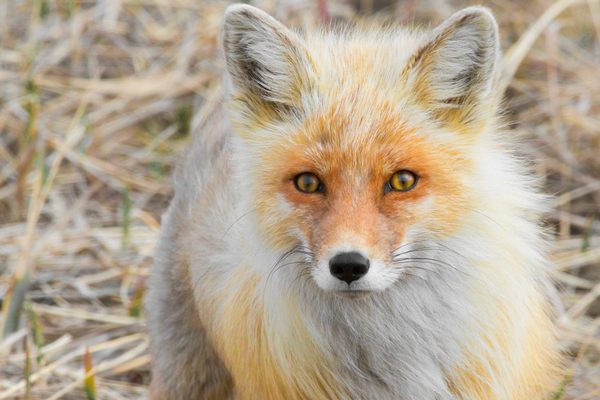Notes from the Field: A Gibbon Experience
We woke at dawn, hundreds of feet high, alone in a treehouse among the Laotian jungle canopy. Mist settled all around us. Suddenly cutting through that thick air came the sound of whooping, resonant siren calls. The Black Crested Gibbons were singing to one another across the chill morning.
The view from our treehouse (photograph by the author)
The Gibbon Experience is a three-day romp through the forest canopy of the remote Bokeo Nature Reserve in Northern Laos via a network of zip-lines and treehouses.
The author zip-lining through the jungle (photograph by Dylan Thuras)
The experience is a mix of the thrilling and the harrowing. In an effort to reduce the impact on the reserve, no roads have been built (undoubtedly saving expense as well), and the only way to move around the jungle is through a series of steel zip-lines, the longest being nearly half a mile. Though Laos has experienced growing tourism in the past few years, it is still a developing country, and the safety standards are enforced more ad hoc than you would find in other countries. “At your own risk” is the abundantly clear mentality at the Gibbon Experience — no helmets, little training on how to zip-line, and often no guides on either end to make sure you’ve made it. Simply strap into your harness, hook onto a zip-line, and zip. Frankly, the freedom is exhilarating.
A rider on a zip-line can gain speed quickly, and the way to slow down is the brake — a piece of moped tire that you squeeze to slow your descent with the friction. Timing is of the essence. Stories were gleefully passed around among others on our tour of injuries — some minor, some not — sustained by zip-liners failing to break before smashing into a tree at the other end.
Our jungle treehouse home (photograph by Dylan Thuras)
At night, everyone retires to their treehouses which are accessed, and can only be accessed, by zip-lining in and out. Hot, fire-cooked meals are delivered by guides, who fearlessly zip-line in, gingerly grasping kettles of boiling water for tea.
Sunset from the treehouse (photograph by the author)
Night is full of sounds — bats and flying squirrels take over the skies; civet cats, tigers, and black bears rustle around on the ground, and macaques swing through the trees. But the Gibbon Experience is all about the morning. The rare Black Crested Gibbons who call the Bokeo Nature Reserve home sing to each other at dawn. It is beautiful.
A Black Crested Gibbon (via Wikimedia)
The fact that there are gibbons here to sing is remarkable. In the 1990s, the gibbons were being poached for their coats, and forests slashed-and-burned at a shocking rate. A concerned and enterprising French statistician teaching in Laos saw an opportunity to both preserve the the land and protect the animals. He envisioned tourists flying through the jungle canopy, poachers turning into guides, and the former hunters leading visitors through the bamboo in search of the elusive gibbons.
Though the Gibbon Experience is far from perfect, it is a worthy vision of “eco-tourism.” Former poachers earn more money with less risk as guides, the endangered gibbons are protected, and the jungle is close to pristine, thanks to zip-lines keeping excessive foot traffic dangling in the air and off the ground. Slash-and-burn farming practices have been culled thanks to outreach programs, giving the farmers the land and knowledge to run their own rice paddies at less danger to themselves and the environment.
According to its website, which should be taken with a grain of salt, once the full infrastructure is developed in full, the ultimate goal is to hand full ownership of the Gibbon Experience back to the Lao people.
A guide leads us through the jungle, his footsteps silent, mine less so, as we seek out a glimpse of the Black Crested Gibbon. (photograph by Dylan Thuras)
Each morning a guide arrived at the treehouse and we would set off into the jungle, in search of the gibbons. A sighting is not guaranteed, but we were extremely lucky, thanks to our experienced guide. After an hour or so of hurrying after a group as quietly as possible, an entire family of gibbons passed right over our heads. A tiny and adorable youngster even paused and made eye contact — a quietly enthralling exchange with a wild animal.
A male Black Crested Gibbon, hanging out, singing across the valley (photograph by the author)
We also were able to capture a blurry photo of a large male lounging in a tall tree across a valley, along with a short clip of his almost supernatural wail:
One of the most important things to us here at the Atlas is to always keep traveling and discovering. Notes from the Field are first person reports from the most inspiring trips taken by the Atlas Obscura Team. Read more Notes From the Field here>



























Follow us on Twitter to get the latest on the world's hidden wonders.
Like us on Facebook to get the latest on the world's hidden wonders.
Follow us on Twitter Like us on Facebook